Quick Reference
Painted 1943
N/A
Oil on Canvas
Landscape
Roads & Streets
22 X 38
Vose Galleries
Mr. and Mrs. Raymond Billings
N/A
Related Links
- See also the...
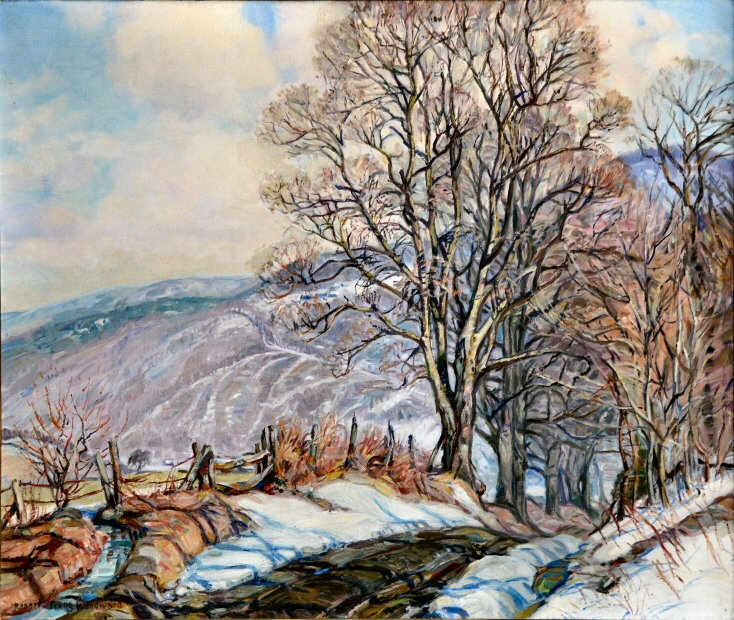 Roads & Streets Gallery to view related pieces.
Roads & Streets Gallery to view related pieces.
- See also Wind'll Blow Hill to view related pieces.
- See also the...
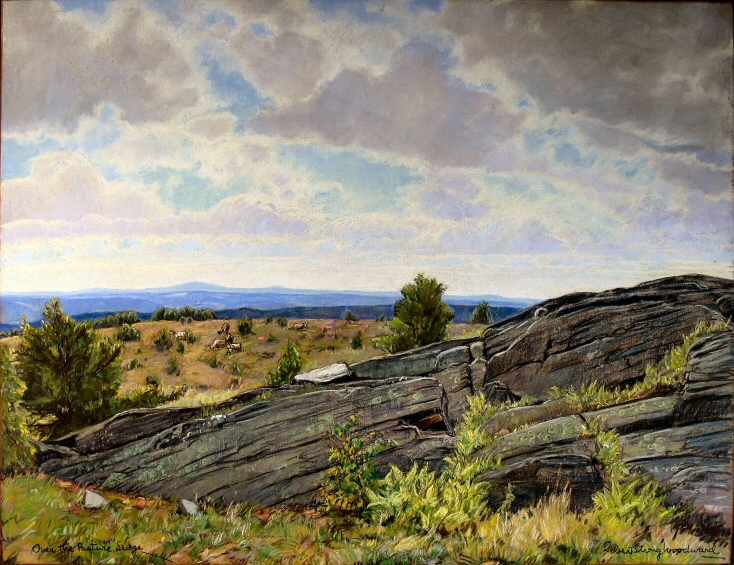 Rocks & Stone Walls Gallery to view related pieces.
Rocks & Stone Walls Gallery to view related pieces.
- See also Just After Haying Time to view related pieces.
- See also the...
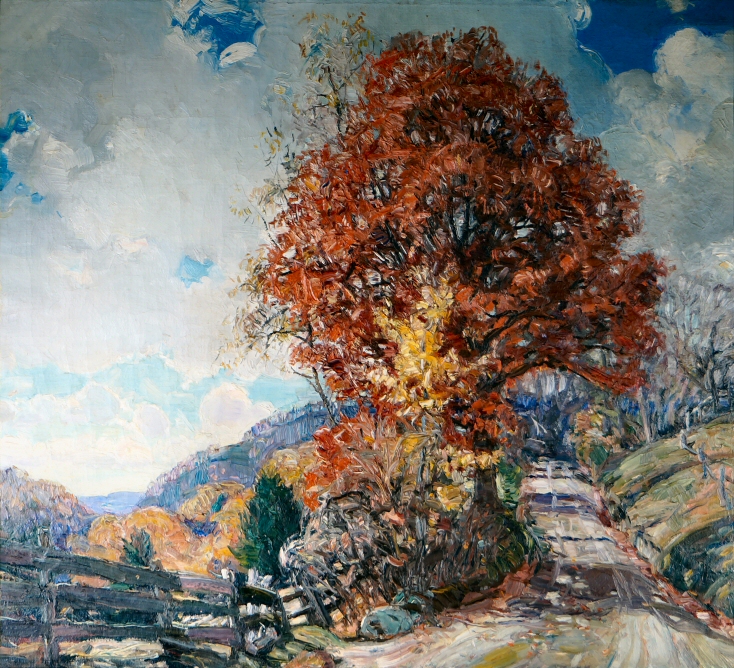 Burning Autumn Gallery to view related pieces.
Burning Autumn Gallery to view related pieces.
- See also In October Hills to view related pieces.
Featured Artwork: Through October Hills (The second of 3 similar paintings)
RSW's Diary Comments
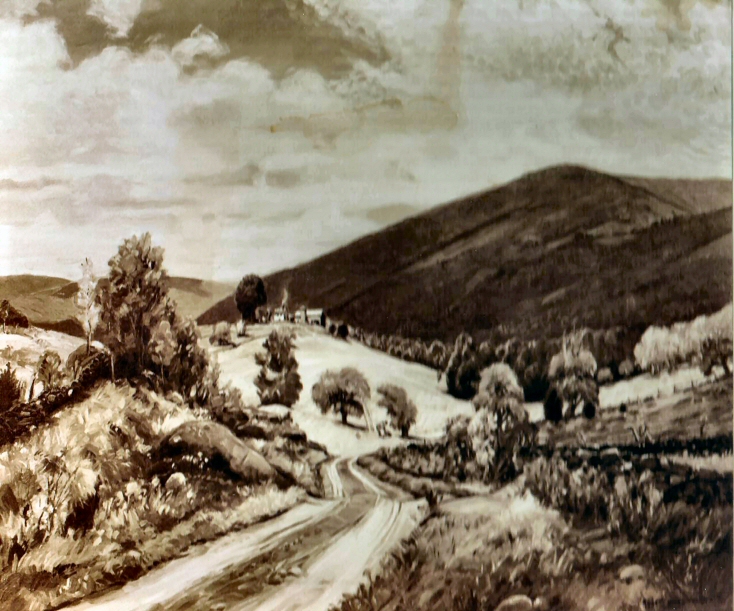
 In October Hills, 1942
In October Hills, 1942
"Painted 1944-45. A brilliant autumn canvas, composed in the studio from elements of different previous canvases of mine, a purplish Oct. mountain with shafts of sunlight on it. The background (taken from Just After Haying Time) --a stonewalled roadway running out of the foreground to drop into middle distance (taken from Wind'll Blow Hill canvas) with mass of autumn trees at the left. Made for tentative clients of Vose Galleries but not bought by them when offered for inspection. Soon purchased, however, from the studio by Mr. and Mrs. Raymond Billings of Hatfield, Mass. At the time made several variations in size composition etc. of the same general theme."
Diary Comments from New England in October:
"Painted about 1944-5. Several paintings similar to this I made in the studio the winter of 1944 '5. The description under Through October Hills (which see) applies to this picture too, although the composition is somewhat different with the stone wall in Through October Hills, for instance, much more prominent. Sold Dec. '53 to Mr. and Mrs. Robert Abbott of Braintree, Mass."
734.png?url=photos/mountain_meadow(24)734.png)
 Mountain Meadow, is the fourth painting
Mountain Meadow, is the fourth painting
in this series, with its much less pronounced wall.
There will be more images and comparisons below.
Editor's Notes:
 We underline Woodward's
remarks concerning this painting from the third version of this scene, New England in October, to stress the point
that differs this painting, the second one made, has a more pronounced stone wall.
We underline Woodward's
remarks concerning this painting from the third version of this scene, New England in October, to stress the point
that differs this painting, the second one made, has a more pronounced stone wall.
At some time or another these details were either overlooked or mixed up and we incorrectly labelled the color image, New England in October (left), as this painting for years! We had the owner of the third painting measure it confirming it is not the size (22" x 38") Woodward claimed is the size of the painting above. See the illustration below for additional information.
 It makes no sense that it took Woodward
(according to his diary comments) almost two years to make the second and third paintings. He even got the first painting's
year wrong. He had a potential customer waiting for her specified dimensions and perspective. There is no way she waited
two years for the painting or that the artist would make her wait that long. In fact, we doubt it took him more than a
couple months to make the second painting which would date it in 1943. The years/dates of the paintings are the most
inaccurate information given in his painting diaries. The exhibition list is far more reliable.
It makes no sense that it took Woodward
(according to his diary comments) almost two years to make the second and third paintings. He even got the first painting's
year wrong. He had a potential customer waiting for her specified dimensions and perspective. There is no way she waited
two years for the painting or that the artist would make her wait that long. In fact, we doubt it took him more than a
couple months to make the second painting which would date it in 1943. The years/dates of the paintings are the most
inaccurate information given in his painting diaries. The exhibition list is far more reliable.
Additional Notes
 Woodward does not say where he got the stonewall to the right of the road or the group of
trees to the left and note that for the other two paintings. The tree group is more pronounced than the original
In October Hills (1943).
Woodward does not say where he got the stonewall to the right of the road or the group of
trees to the left and note that for the other two paintings. The tree group is more pronounced than the original
In October Hills (1943).
 For this painting and the third, the left side of the road is far less than the original
scene from Wind'll Blow Hill meaning that the only part of the Conway painting to remain is the road and its giant rock.
For this painting and the third, the left side of the road is far less than the original
scene from Wind'll Blow Hill meaning that the only part of the Conway painting to remain is the road and its giant rock.
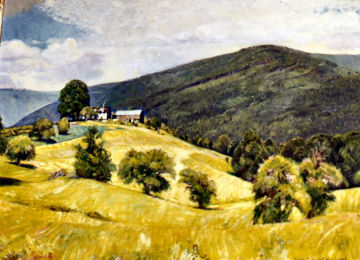
 Just After Haying Time
Just After Haying Time
734.png?url=photos/windll_blow_hill(24)734.png)
 Wind'll Blow Hill
Wind'll Blow Hill
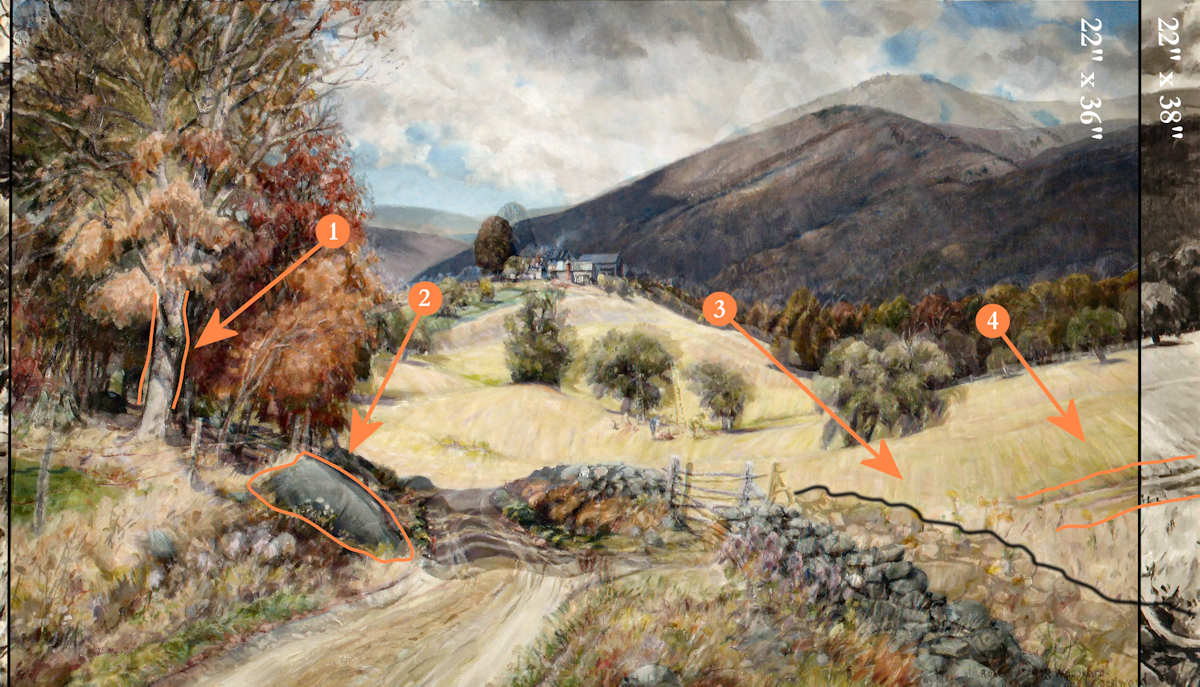

.png)

734.jpg)